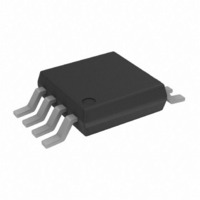AD7276BRMZ Analog Devices Inc, AD7276BRMZ Datasheet - Page 15

AD7276BRMZ
Manufacturer Part Number
AD7276BRMZ
Description
IC ADC 12BIT 3MSPS HS LP 8MSOP
Manufacturer
Analog Devices Inc
Datasheet
1.AD7278AUJZ-500RL7.pdf
(28 pages)
Specifications of AD7276BRMZ
Data Interface
DSP, MICROWIRE™, QSPI™, Serial, SPI™
Number Of Bits
12
Sampling Rate (per Second)
3M
Number Of Converters
1
Power Dissipation (max)
19.8mW
Voltage Supply Source
Single Supply
Operating Temperature
-40°C ~ 125°C
Mounting Type
Surface Mount
Package / Case
8-TSSOP, 8-MSOP (0.118", 3.00mm Width)
Resolution (bits)
12bit
Sampling Rate
3MSPS
Input Channel Type
Single Ended
Supply Current
5.5mA
Digital Ic Case Style
SOP
No. Of Pins
8
Lead Free Status / RoHS Status
Lead free / RoHS Compliant
For Use With
EVAL-AD7276CBZ - BOARD EVALUATION FOR AD7276
Lead Free Status / RoHS Status
Lead free / RoHS Compliant, Lead free / RoHS Compliant
Available stocks
Company
Part Number
Manufacturer
Quantity
Price
Company:
Part Number:
AD7276BRMZ
Manufacturer:
Analog Devices Inc
Quantity:
135
Part Number:
AD7276BRMZ
Manufacturer:
ADI/亚德诺
Quantity:
20 000
TERMINOLOGY
Integral Nonlinearity
The maximum deviation from a straight line passing through
the endpoints of the ADC transfer function. For the AD7276/
AD7277/AD7278, the endpoints of the transfer function are
zero scale at 0.5 LSB below the first code transition and full
scale at 0.5 LSB above the last code transition.
Differential Nonlinearity
The difference between the measured and the ideal 1 LSB
change between any two adjacent codes in the ADC.
Offset Error
The deviation of the first code transition (00 . . . 000) to
(00 . . . 001) from the ideal, that is, AGND + 0.5 LSB.
Gain Error
The deviation of the last code transition (111 . . . 110) to
(111 . . . 111) from the ideal after adjusting for the offset error,
that is, V
Total Unadjusted Error
A comprehensive specification that includes gain, linearity, and
offset errors.
Track-and-Hold Acquisition Time
The time required after the conversion for the output of the
track-and-hold amplifier to reach its final value within ±0.5 LSB.
See the Serial Interface section for more details.
Signal-to-Noise + Distortion Ratio (SINAD)
The measured ratio of signal to noise plus distortion at the output
of the ADC. The signal is the rms amplitude of the fundamental,
and noise is the rms sum of all nonfundamental signals up to half
the sampling frequency (f
dc. The ratio is dependent on the number of quantization levels
in the digitization process: the more levels, the smaller the quanti-
zation noise. For an ideal N-bit converter, the SINAD is defined as
According to this equation, the SINAD is 74 dB for a 12-bit
converter and 62 dB for a 10-bit converter. However, various
error sources in the ADC, including integral and differential
nonlinearities and internal ac noise sources, cause the measured
SINAD to be less than its theoretical value.
SINAD
REF
− 1.5 LSB.
=
. 6
02
N
+
. 1
S
/2), including harmonics but excluding
76
dB
Rev. B | Page 15 of 28
Total Harmonic Distortion (THD)
The ratio of the rms sum of harmonics to the fundam tal. It is
defined as:
where:
V
V
through sixth harmonics.
Peak Harmonic or Spurious Noise
The ratio of the rms value of the next largest component in the
ADC output spectrum (up to f
of the fundament
determined by the largest harm
ADCs with harmonics buried in the noise floor, it is determined
by a noise peak.
Intermodulation Distortion
With inputs consisting of sine waves at two frequencies, fa and
fb, any active device with nonlinearities creates distortion
products at sum and difference frequencies of mfa ± nfb, where
m and n = 0, 1, 2, 3, …. Intermodulation distortion terms are
those for wh
the second-order terms include (fa + fb) and (fa − fb), and
third-order terms include (2fa + fb), (2fa − fb), (fa + 2fb), and
(fa − 2fb).
The AD7276/AD7277/AD7278 are tested using the CCIF
standard in which two input frequencies are used (see fa and fb
in the specifications). In this case, the second-order terms are
usually distanced in frequency from the original sine w
the third-order terms are usually at a frequency close to the input
frequencies. As a result, the second- and third-order terms are
specified separately. The intermodulation distortion is
calculated
the ratio of the rm
the rms amplitude of the sum of the fundamentals expressed in
decibels.
Aperture Delay
The measured interval between the leading edge of the sampli
clock and the point at which the ADC takes the sample.
Aperture Jitter
The sample-to-sample variation when the sample is taken.
1
2
, V
is the rms amplitude of the fundam
THD
3
, V
4
, V
in a similar manner to the THD specification, that is,
( )
dB
5
ich neither m nor n are equal to zero. For example,
, and V
=
al. Normally, the value of this specification is
20
s sum of the individual distortion products to
6
log
are the rms amplitudes of the second
AD7276/AD7277/AD7278
V
2
2
S
+
/2, excluding dc) to the rms value
onic in the spectrum; however, for
V
3
2
+
V
V
ental.
1
4
2
+
V
5
2
+
V
6
2
en
aves, and
the
ng













